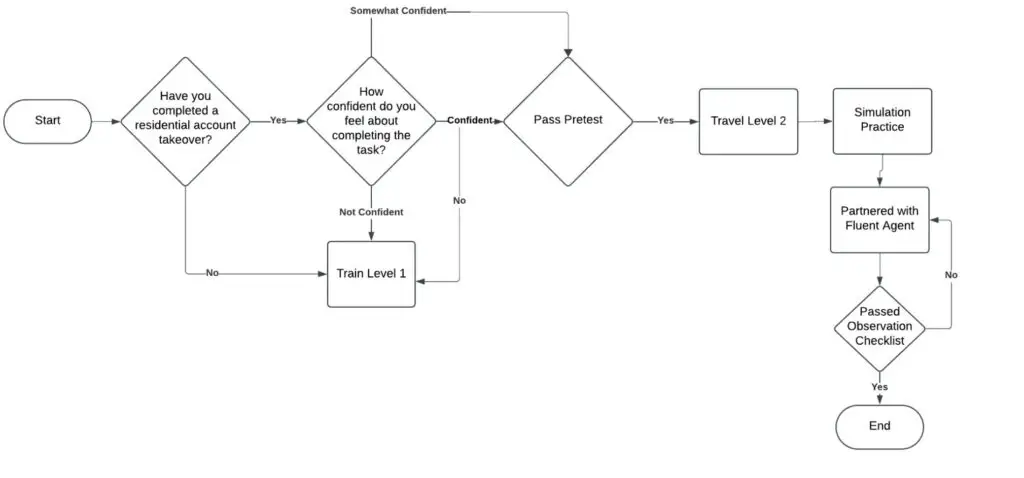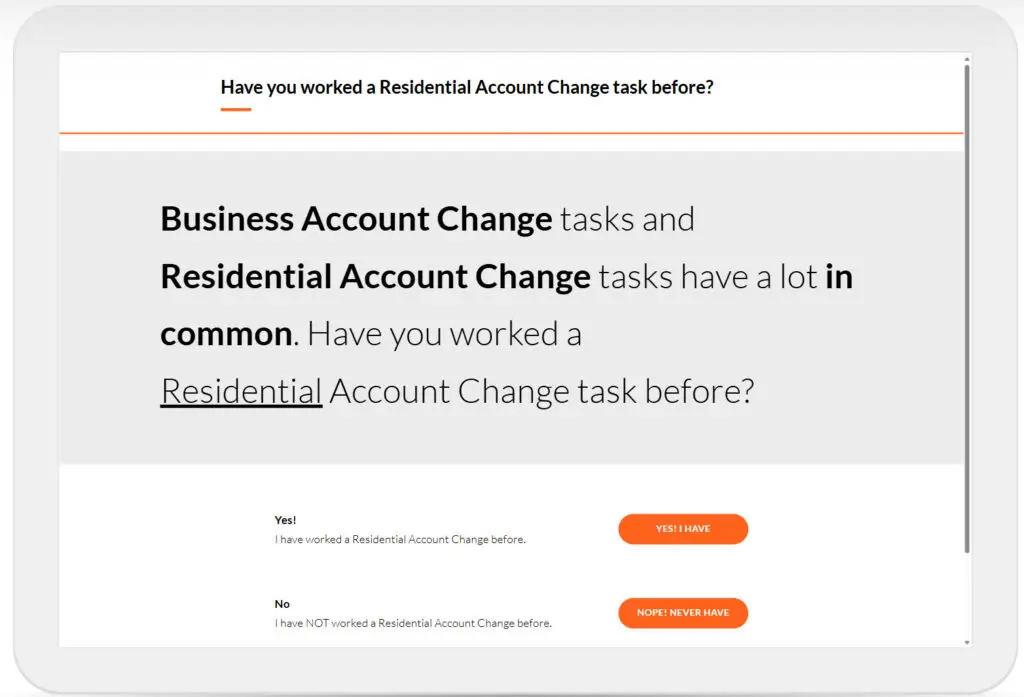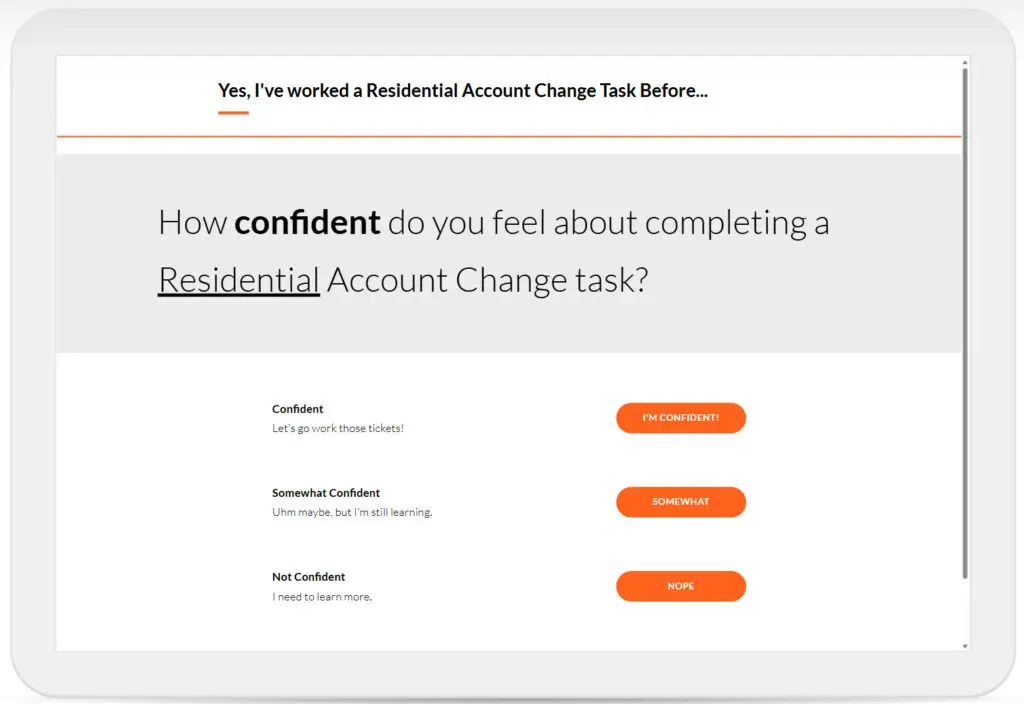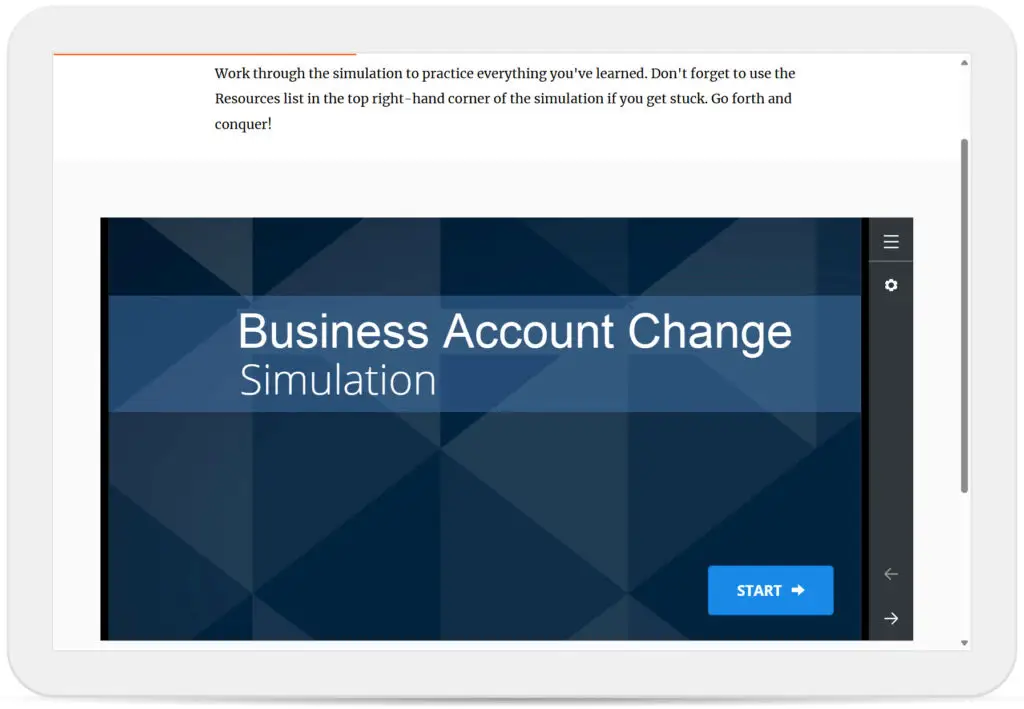Adaptive Learning
Adaptive Learning for Agent Upskilling: Personalizing the Learning Path
This project addressed inconsistencies in agent training by creating an adaptive learning course in RISE, incorporating Storyline simulations, to upskill Level 1 agents to Level 2. The course dynamically adjusts the learning path based on prior experience and demonstrated proficiency, ensuring each agent receives the targeted training they need.
The Process
THE CHALLENGE
Addressing Inconsistent Training and Knowledge Gaps
During the needs analysis, it was discovered that Level 1 agents had varying levels of experience with different ticket types (Task A and Task B). This inconsistency created knowledge gaps and hindered the upskilling process. Some agents had experience with Task A tickets (individual account changes), which provided a foundation for learning Task B tickets (business account changes), while others had no prior experience with either.
THE SOLUTION
A Personalized Learning Experience: Adapting to Individual Needs
To address the varying levels of prior experience with ticket types, I implemented an adaptive learning path within the RISE course. This personalized approach ensured that each agent received targeted training based on their existing knowledge. The logic consisted of several key branching points:
- Initial Branching: Learners were first asked if they had prior experience working Task A tickets.
- Confidence-Based Branching (For Experienced Learners): Those who answered “Yes” were then asked about their confidence level in performing Task A tickets. They selected from “Confident,” “Somewhat Confident,” or “Not Confident.”
- Pre-Test for Confident Learners: Learners who selected “Confident” or “Somewhat Confident” were presented with a pre-test assessing their proficiency in resolving Task A tickets. This allowed proficient learners to bypass redundant training.
- Targeted Task A Training: Learners who answered “No” to prior experience or did not pass the pre-test were directed to training specifically on resolving Task A tickets. This ensured that all learners had a solid foundation before moving on to Task B training.
- Universal Task B Training: Regardless of their starting point, all learners eventually converged on the training for resolving Task B tickets, ensuring consistent knowledge and skill development across the team.
EXPERIENCED AGENT COLLABORATION
Applying Knowledge in a Real-World Setting
Following the online training and simulations, learners worked alongside experienced Level 2 agents. An observation checklist was used to assess their performance in resolving Task B tickets in a real-world setting. This practical application and observation ensured learners could effectively apply their new skills. Agents who did not pass the observation checklist continued to work with Level 2 agents until they demonstrated mastery.
MEET LEARNERS WHERE THEY ARE
Targeted Training for Improved Efficiency and Knowledge Retention
This adaptive approach ensured that each agent received the specific training they needed, eliminating redundant training for experienced agents and providing targeted support for those lacking prior experience. This resulted in more efficient use of training time and improved knowledge retention.
Course Logic and Structure

Rise Course Structure
The Rise course was structured to seamlessly deliver the adaptive learning experience. I utilized Rise’s block-based architecture to create distinct learning paths based on the branching logic. This involved using interactive blocks like knowledge checks and buttons to direct learners to the appropriate content. The structure allowed for a smooth and intuitive user experience, guiding learners through the personalized path designed for them.
Storyline Simulations
To provide practical, hands-on experience, I developed interactive simulations using Articulate Storyline. These simulations provided a safe and realistic environment for learners to practice resolving both Task A and Task B tickets. The simulations included:
- Realistic ticket scenarios mirroring real-world situations.
- Interactive elements allowing learners to make decisions and see the consequences of their actions.
- Feedback mechanisms providing immediate guidance and reinforcement.
These simulations played a crucial role in bridging the gap between theory and practice, allowing learners to apply their knowledge in a risk-free setting before working with real customer tickets.



